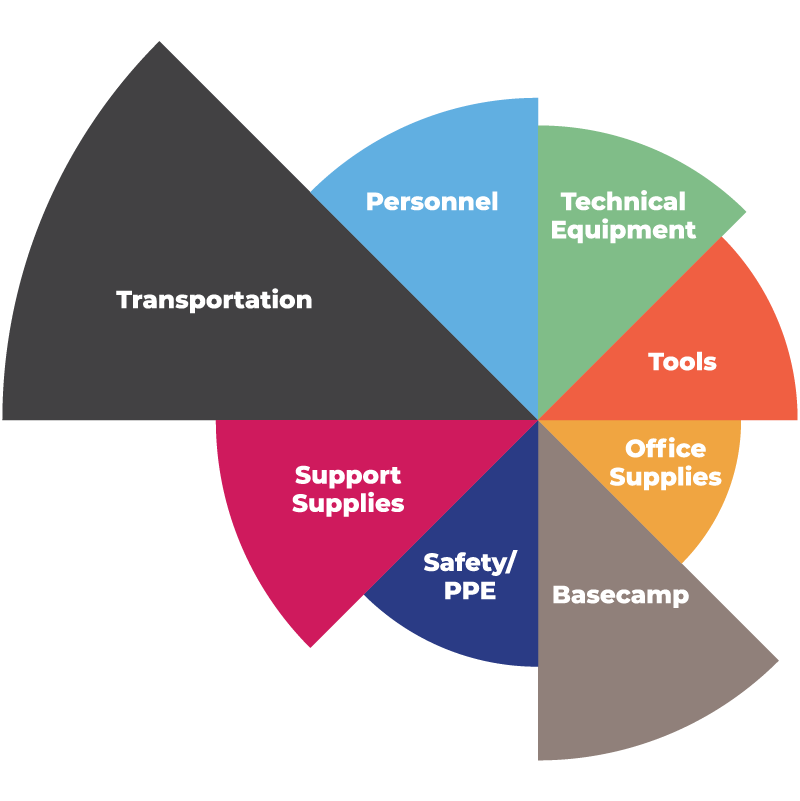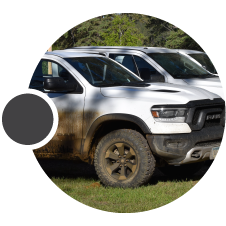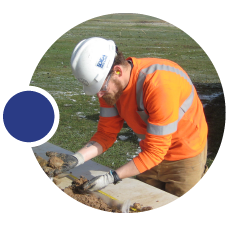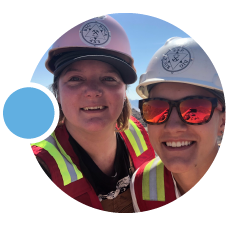HOW Operational Logistics DRIVE FIELD PROGRAM SUCCESS
In order to execute a successful and efficient exploration program, the Director of Operations must not only be a technical expert, but also a logistical master. Planning, organizing, and moving 16,000 pounds of personnel, supplies, and highly sensitive equipment over thousands of miles from headquarters to remote wilderness job sites is a thing of beauty when executed to precision.
As the saying goes, you’ve got to make hay while the sun shines, and our team has their work cut out for them during the warmer months of the year. In a typical field season for Big Rock, we’ll have over 30 technical staff deployed in the field on over a dozen active programs. Our footprint this season will span a dozen states and provinces, and in the process the team will collectively cover some 55,000 miles of travel in a few short months.
By the numbers |
An average field season for Big Rock
Technical staff
Active programs
Lbs. of equipment
Miles traveled
The Operations Orchestration
In order to accomplish all of a project’s technical objectives within a season, it’s critical to be efficient on a daily basis. This starts with extensive pre-field planning, preparation, and program design. These crucial steps each build on each other using a systematic checklist of tasks scripted by the field operations director.
The field operations director functions much like the conductor of an orchestra. They must have a full toolkit of skills to not only understand how all aspects of a program work, but to bring numerous pieces together into synchronized, seamless execution. In any effective project that builds towards an end goal, it takes a clear vision and optimal design to serve as the foundation for success.
Field Ops Director Profile |
A TOOLKIT OF MUST-HAVE SKILLS
- STRATEGIC 100%
- Managerial 100%
- Technical 100%
- Logistical 100%
- Physical 100%
Roadmap to discovery
Mobilizing an entire field program is a lot more than just throwing gear in a truck and hitting the road. Each phase of the process requires tapping different combinations of skills to ensure no detail goes overlooked and no piece falls through the cracks.
Throughout the mobilization process from headquarters to the field site, adherence to proven protocols and standard operating procedures (SOPs) mitigate potential errors and uphold the Big Rock quality standard.

Field Team, Assemble!
While the field operations director brings overall leadership to an effective program, the rest of the technical team each bring their own unique set of skills to the table to fill a variety of essential roles. Each role is interdependent on the others, meaning coordination and teamwork are essential to a successful outcome.





Tools of the trade
When first on the ground beginning a grassroots field program, the technical team will perform regional reconnaissance mapping and sampling. During this phase, the crew will systematically cover large areas of land to gather data on specific lithologies, structures, alteration types, or other areas of possible mineralization. In order to be effective on the ground, there is a fundamental set of equipment necessary to get the job done to the Big Rock standard of quality.
Outfitting a Field Program |
What does 16,000 pounds of gear look like?







On Operational Excellence
“Of the things under our control as technical consultants, effort and quality will always be at the top. Before we even start any work in the field, we’re invested in our client’s success.”
Brandon Isakson, Director of Operations






